| |
| St.
Patrick |
|
Patrick's story
begins in Roman Britain, where he is born into a clerical
family. His father, Calpurnius is a deacon of the Church,
his grandfather a priest. The age of celibate clergy has yet
to be established, despite the intentions of Pope Siricius.
|
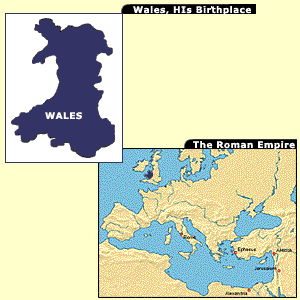 |
|
Patrick's home life is comfortable. His
father is a member of the gentry and a town councillor
to boot, owning land, houses and slaves. By the standards
of his locality, Patrick is well placed in life. His
boyhood is easy, and compared to his later life, irreligious.
|
| |
read
more |
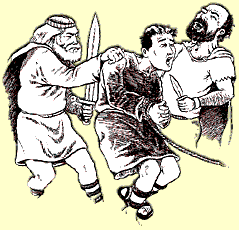 |
How
things change. In normal circumstances, Patrick would
have a classical education to look forward to, the preserve
of the privileged elite. This opportunity is taken from
him the day that Irish raiders storm his father's estate.
Men are killed, property looted, and sixteen-year-old
Patrick taken prisoner in the resulting mayhem.
|
| |
|
| Patrick
isn't alone in this cruel twist of fate. As he is being
taken to the curragh on the beach, he sees many other
boats, with countless prisoners being loaded into the
holds. Needless to say, it is a traumatic experience for
the youth and those in the vicinity. The Irish are fearsome
barbarians. |
| |
| In
Ireland, Patrick, along with other slaves, is transported
far from the east coast to reduce the risk of escape.
He is sold to a slave owner in Co Mayo, in the north east
of the county, near Killala. He works as a shepherd in
the woods and on a mountain in a remote part of the countryside,
suffering from exposure to the elements. It is indeed,
a harsh change of fortune. |
|
Lonely
and uncared for in a foreign land, Patrick turns to
the only source of help available in such extreme conditions.
He begins to pray. The more he prays, the greater his
devotion. Patrick arises before dawn, whatever the weather,
to begin his daily worship. When his working day ends,
his prayers continue long into the night.
|
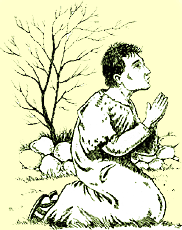 |
| |
|
|
Patrick's period in slavery lasts for
six years. His flight from captivity is precipitated
by a dream, in which he is told that he will soon return
to his home country. Aided by his remote location, Patrick
is able to make good his escape before his owner notices
his absence. He travels east.
|
| |
| This is a desperate
time for Patrick, living on the run, taking food and shelter
wherever he can get it. Finding his way to the coast,
he manages to wrangle his way onto a craft bound for France.
It is not so much a desire to visit the continent as the
need to get out of Ireland, which motivates Patrick in
this regard. It's the only boat he can get on. |
|
Patrick's
arrangement with the ship's crew quickly turns sour.
When they land in France, Patrick is friendless and
penniless, and the sailors are wise to his vulnerability.
His status as a freeman of the Roman Empire is of no
help to him even here within its borders, and the sailors
sell him into bondage at the first settlement they encounter.
|
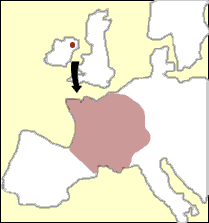 |
| |
|
|
Patrick's second period of enslavement
also stretches into years, though it is not as long
as his first, painful experience. Again, his faith in
God, and his devotion to prayer, provide his only solace
in this bleak environment. He remains in France for
the best part of four years.
|
| |
| Finally, Patrick
arrives back to his home in his mid-twenties, a changed
person from the enslaved adolescent. The carefree youth
has grown into a devout and serious young man. As relieved
as he is to be home, Patrick's experiences have marked
him in such a way that he no longer belongs here in this
comfortable place. His life's work, which is God's work,
is to be done elsewhere. |
|
Patrick's
vocation comes to him in a dream. He finds himself back
in the west of Ireland, and he hears the voices of the
people there, imploring him to return. They cry out
in one voice thus: "We are asking you, holy boy,
to come and continue to walk among us." It is a
turning point in Patrick's life.
|
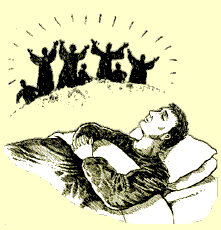 |
| |
|
|
So, Patrick wants to return to Ireland
to win her people to Christianity; how is such a feat
to be achieved? He has missed out on much of his education,
and in any event, has not even begun training for the
priesthood. He has a long way to go before he can embark
on such an ambitious mission. In this way, Patrick's
life from his mid-twenties till middle age becomes a
time of preparation for his heart's desire.
|
| |
| In due
course, Patrick becomes the Bishop of Ireland. He isn't
the first such Churchman to minister in Ireland; in 431,
Pope Celestine appointed Palladius as "the bishop
of the Irish who believe in Christ". However, Patrick
is the first bishop who intends to mobilise his office
for the sake of converting the pagan hordes.
|
|
Patrick's
intention is unorthodox for his time, and it does not
find favour with his contemporaries and seniors in Britain.
They have never heard of a bishop's office being used
for such a purpose, and they genuinely fear for Patrick's
safety among the Irish barbarians. His mission is unique
in Europe and he has no forerunners. To venture to Ireland
on such business is extremely dangerous - Patrick risks
kidnap and murder - but he is a driven man, a force
of nature. There is no stopping him.
|
| |
|
| In Ireland, he
travels far and wide with his missionary zeal. Convincing
people to abandon the gods of their fathers and forefathers
is no easy task, and Patrick's success is limited. He
aims at the chieftains, the nobility of Irish society,
knowing that the new religion has a far greater chance
of gaining a foothold from the top than from the bottom.
As in any other offensive, holding the high ground is
invaluable. |
|
The
danger of the work never abates for Patrick, even to
the end of his life. Whatever about his ambition to
convert the nobility, he makes his conversions in whatever
sector of society he can, risking his neck on his roving
commission. Patrick's is a small and scattered flock.
|
| To
make safe his passage, he resorts to paying protection
money to local chieftains. The project is financed by
the sale of Patrick's land in Britain. As a member of
the nobility, he has sold his birthright to help convert
the Irish. He has given his all. |
|
Instead
of being daunted by the scale and danger of his task,
Patrick embraces the possibility of martyrdom, writing
in his journal: "I ask God that he should grant
me to pour out my blood for his name in company with
those strangers and captives." This fate is not
to be, however, and he works into his old age.
|
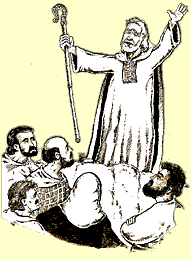 |
| Patrick leads
by example, making himself a source of inspiration for
those whom he wishes to convert. He gives an impressive
picture of faith, praying, fasting and preaching, rejecting
the things of this world. Such holy living is a demonstration
of the power and energy of Christianity. It appeals to
those who are most open to spiritual ideas, the children
of nobility, slaves, the poor and marginalized. As Patrick
suffers for his faith, so do those who come to Christ
through him. |
|
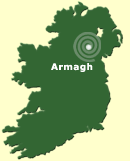
|
Although
missionary activity is Patrick's main reason for coming
to Ireland, he also performs the standard duties of his
ecclesiastical office. He baptises and confirms people,
he ordains clergy, and he supervises those in religious
life. The monks of this time are hermits, and nuns live
out in the world among the laity. Patrick brings with
him the parochial and diocesan system from Britain, and
in such a way, begins to organise the burgeoning Church
in Ireland. It is tireless work for a man in old age.
|
| At the centre
of Patrick's efforts is Armagh, where he establishes his
see. The site of his stone church, the Damhliag Mór,
is given to him by Dáire, the local chieftain.
Armagh is powerful administrative centre, so the choice
of it as see has significance for the region as a whole.
The new religion has the approval of those in power.
|
| Be
that as it may, by the time of Patrick's death, Ireland
is still largely pagan. Right up to the end, the work
of evangelisation has not ceased to be hazardous in this
hostile environment. But through his many ordinations
and conversions, Patrick has succeeded in making significant
inroads. A good start has been made, a light in the darkness.
|
|
|
|
Related
 |
|
|
|
|
